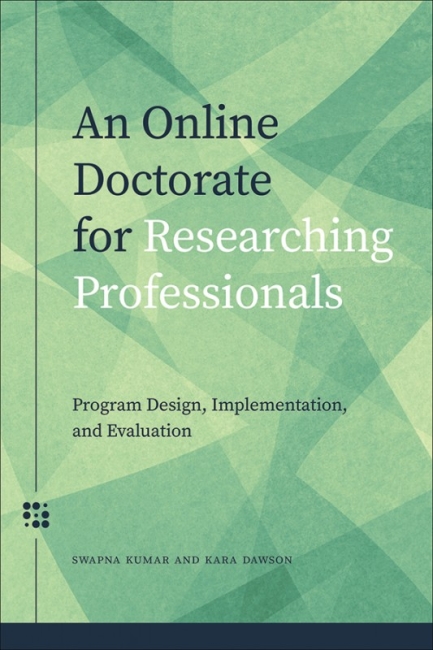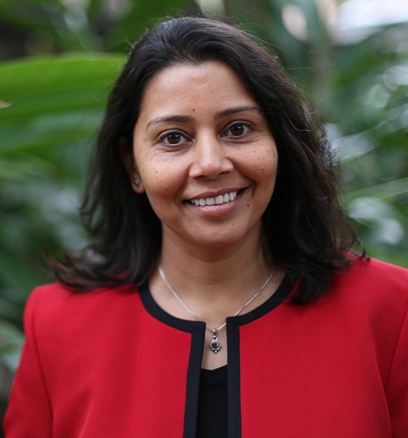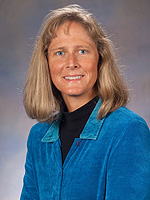You have /5 articles left.
Sign up for a free account or log in.

Courtesy of Athabasca University Press
In 2006 Kara Dawson, a professor of educational technology at the University of Florida, started to realize that her institution's Ph.D. program in education was too narrowly focused on students aiming to work in academe. Many working professionals in the program weren't adequately served by the course content. Meanwhile, working professionals elsewhere in the country had started expressing interest in the program.
Dawson, along with her colleague Rick Ferdig, had recently launched online master's programs in education. They soon became convinced they could give the doctoral program the same treatment. In fall 2008, a new online Ed.D. program in educational technology began enrolling students.
In the process of creating an online doctoral program in education, Dawson had lots of time to ponder best practices for online doctorates more generally. Along with her colleague Swapna Kumar, who joined as program coordinator in 2009, Dawson synthesized her experience into a new book, An Online Doctorate for Researching Professionals: Program Design, Implementation and Evaluation (Athabasca University Press). Dawson and Kumar aim to give instructors and designers tools and tips for launching online doctoral programs that offer students maximally valuable learning experiences.
"Inside Digital Learning" asked Kumar and Dawson for some thoughts on what makes a great doctoral program and how to avoid inevitable pitfalls. A lightly edited transcript of the exchange follows.
Q: What aspects of a successful face-to-face doctoral program are most difficult to translate into the online format?
A: The biggest challenge of the online environment is that any learning experience, be it a course or a program, has to be purposefully designed and readied well in advance to achieve its goals. Our intent in creating an online doctoral program was not to recreate what exists on campus. Therefore, our book is aimed at explaining how an excellent online doctoral program can be created, implemented and evaluated as a unique learning experience.
More Q&As from "Inside Digital Learning"
Gameful design could be the next big innovation.
What virtual reality can and should do.
How to think about online teaching and design.
A bird's-eye view of online program quality.
In doctoral education, it is probably most difficult to simulate traditional research apprenticeship experiences online, but that was not a goal in our online doctoral program. We have a successful Ph.D. program on campus that we found was not meeting the needs of all students. We had several inquiries from working adults interested in conducting research in professional environments. We thus set out to create an online program that met those needs, and that had a different purpose -- namely, to fuse theory, research and practice. While there are essential components of all doctoral programs, be it face-to-face or online (such as student acquisition of knowledge of prior research, academic writing), our goal was not to copy or rebuild courses or a program online that exists face-to-face.
Our on-campus and online doctoral programs are very different in purpose and design; each has components that are unique. For instance, research apprenticeships and enculturation into the discipline are strong components of the on-campus program, while the integration of theory and research into practice is a strength of the online program, as is the diversity of students in terms of age, backgrounds, expertise and experiences. Community is built differently in each environment, where different media, structure and strategies are required.
Q: Do doctoral programs struggle with lingering skepticism over the validity of the online modality in the same way that many undergraduate and graduate programs do?
A: Despite the extensive research on quality in online education, the online modality and online learning experiences continue to be viewed with skepticism. In reality, both online and face-to-face learning experiences vary in quality. Yes, online doctoral programs do struggle with perceptions of poor quality, which is why we have done extensive research on various aspects of our program to document quality assurance and impact. We have also devoted Part III in our book to quality and impact.
Q: What techniques did you employ to ensure that an online doctoral program offered a learning experience comparable to that of the traditional modality?
A: Our goal was never to offer a learning experience that was comparable to the on-campus experience, but to design a unique and excellent learning experience that fulfilled our objectives and those of incoming students. When creating online learning experiences, it is extremely important not to adopt a comparison mind-set, but to exploit the potential of the online medium as a unique environment with its own opportunities and challenges. We drew on our extensive experience and prior research in online education, doctoral education and adult education to design our online doctoral program.
Specific techniques that we employed:
- Instructional design and backward design. We identified the goals of the program (e.g. the ability to conduct independent research, write a dissertation, scholarly thinking), “unpacked” the different areas that would need to be addressed in the curriculum to fulfill those goals and then designed online learning experiences that would fulfill those goals. Chapters 1 and 4 in our book describe these techniques.
- Our students are professionals with other commitments. Therefore it was important to design online learning experiences for relevance, application to professional environments and facilitation of student professional development.
- Likewise, we required certain technologies but designed for student-driven technologies and learning experiences.
- We decided on a cohort model to create an online scholarly community that would support online students. Implementing research and writing a dissertation can be an isolating experience in any environment. Peer interactions, community building and support can greatly contribute to retention in the online environment.
- We not only reflected on dissertation content and guidelines but also analyzed our first 23 dissertations to understand the kinds of research that emerged from our program and how we could support students and the faculty mentoring them during dissertations. We have successfully implemented strategies for both individual and group mentoring in the online environment.
- We engaged in a continuous cycle of feedback and redesign for improvement and quality maintenance in our program. We have been lucky to work in a collegial environment with amazing colleagues in our educational technology program who have provided their input on our program design over the last 10 years.
Q: What were the biggest challenges you encountered in the process? Were others skeptical that you would be successful?
A: Due to the varying quality of doctoral programs being offered, there is a perception that the doctorate in education (Ed.D.), online or face-to-face, is a light version of the doctorate in philosophy (Ph.D.). Thus, when we set out to create an online Ed.D., there was a presumption that it would lack rigor and quality just because of the nature of the degree. There is also a tendency to compare online education to on-campus education, whereas the reality is that the quality of learning varies widely, both on campus and online. We addressed these two challenges by collecting data that helped us assure the quality of our program and document its impact, and publishing articles and this book about our program.
(Note: The book includes results of a survey of students at the end of the first year of each of the first three cohorts on the application of learning to professional practice. Students were asked to rate their agreement with various statements on a scale from 1 -- strong disagreement -- to 5 (strong agreement). The phrase "I have applied knowledge or skills gained from Year 1" earned a mean score of 4.33 in the first cohort, 4.37 in the second cohort and a significant leap to 4.77 in the third cohort. Other statements included "I have changed how I approach my work responsibilities," "I have a better understanding of my role as a practitioner" and "The program has been relevant to my professional goals." Agreement on all six of the presented statements increased by that margin or more from year one to year three.)
Unlike face-to-face environments that offer more flexibility, online environments have to be purposefully structured before students begin their studies, and it is not possible to leave things to chance. Program design includes curriculum mapping with the end goal of the dissertation and all the content and experiences that lead up to it. At the doctoral level, this is particularly challenging because students have different research interests and professional goals (a master's or undergraduate program is far more homogenous in student goals and outcomes). Doctoral experiences have to be individualized to ensure student development, while simultaneously ensuring the acquisition of knowledge and research skills for all students. In a professional doctoral program in educational technology, the professional environments, disciplines, backgrounds and goals of students vary widely, making it difficult to provide learning experiences that are meaningful and relevant to all.
 Q: What surprised you most about this process? How would you approach it differently if you could do it again?
Q: What surprised you most about this process? How would you approach it differently if you could do it again?
A: What surprised us most is that it is never “done.” Program design needs constant work because there is so much to always learn and improve. Each incoming cohort is different; we adapt to the students and learn from each experience, so it is always a work in progress. We were also surprised by the number of amazing professionals out there who applied and enrolled in our program, the caliber of work that they produced and their ability to persist despite all their commitments. When we began, we also didn’t realize there would be such rapid growth in such a short time, that so many institutions would begin doing something similar. We are amazed at the range of online doctoral programs that now exist, and the different ways in which they have been designed, from the admissions process to program content to the types of dissertations.
In terms of what we would do differently, we just began our 10th year and our sixth cohort (we admit one every two years), so we have already had the opportunity to make changes and improve with each cohort. We built in cycles of feedback and revised what didn’t work based on that feedback. (In the book, Dawson and Kumar mention that early iterations of the program had overlapping content and that "knowledge needed at the qualifying examination and dissertation stages had not been delivered in the coursework." The team subsequently made an effort to "streamline the curriculum across core courses.")
We have been very lucky to work with colleagues who collaborate and others in our college who have contributed to the success of our program. If we had known the extent of the continual workload, we would have attempted to negotiate incentives for the faculty mentoring doctoral students and serving on committees in our program.
Q: What lessons did you learn about teaching and learning from thinking critically about the shape of an online doctoral program?
 A: We both had significant experience teaching in various educational contexts, and several years of online teaching and curriculum development when we worked on the online doctoral program. Thinking critically about the design of the online doctoral program did reinforce three areas for us:
A: We both had significant experience teaching in various educational contexts, and several years of online teaching and curriculum development when we worked on the online doctoral program. Thinking critically about the design of the online doctoral program did reinforce three areas for us:
- The importance of explicit communication in the online environment -- communicating expectations clearly, sharing experiences of prior students and helping students be very intentional about their learning.
- The importance of structure in the online environment, so that students have a road map, know what is expected of them, understand the support available to them and can succeed.
- The need for flexibility and openness to change. The content and design of the program evolves and adapts to developments in our discipline, the needs of the students and the technologies that are available to us. Online professional students in our program research a wide range of problems in diverse environments, because they are located both in and outside the U.S. and work across many fields.
Q: What advice would you give to other institutions looking to create similar programs?
A: Defining the purpose, goals and prospective students is important for any learning experience. In an online doctoral program, defining the nature of the dissertation, the prospective students, the types of research they will conduct and the larger purpose of the doctoral degree is essential because this drives most of the program design. Instead of attempting to recreate on-campus programs in online environments, it is important to create a program for the online environment and for online learners. This involves creating a curriculum that is purposefully sequenced and designed for the online medium, engaging and supporting faculty to mentor research and dissertations in the online environment, creating and providing resources specifically for online doctoral students (e.g., information literacy support, access to online student services, access to research apps or technologies at a distance, creating research courses or project experiences for online learners [and professional online learners]), and experimenting with different technologies that work for both faculty and students.
We have enjoyed this endeavor, so we would suggest having a vision, being open and flexible to change during implementation, and learning from students and faculty about what works or not as you make changes for improvement.




